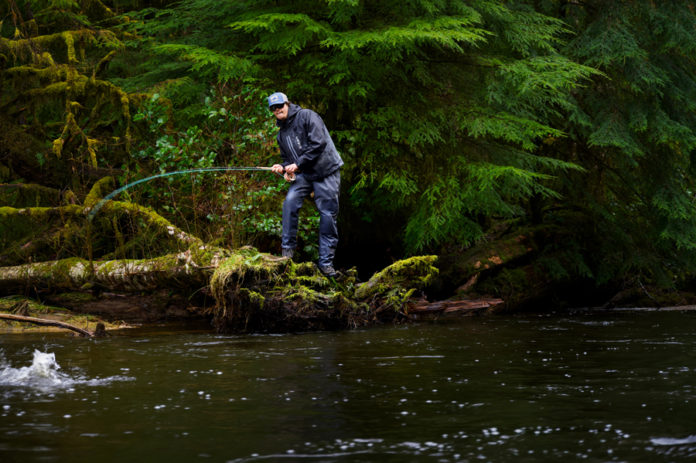Written by: Derek Botchford and Steve Morrow, Epic Waters Angling
Epic Waters Angling and Orvis have teamed up to create a steelheading miniseries. Using the latest Orvis prototypes, the clips are specifically catered to small-stream tactics. After a busy season of guiding, Derek Botchford and Steve Morrow set out to deliver viewers techniques that are designed to elevate the game of steelhead anglers from the west to the Great Lakes.
So where can you possibly start a series like this? How about at the mouth of West Coast steelhead river? From the moment fish enter fresh water, their behavior is adapting and changing. How fish see the river and visualizing their migration up a system is a valuable exercise, whether you’re a newbie or an expert. Not only will it help you pinpoint the spots steelhead should be, but more importantly, you’ll be able to eliminate all the spots they won’t frequent, as well. After all, steelheading is a game of maximizing you time in the good stuff.

One minute you’re cruising safely through a big, black body of water, and the next you’re forcing your way over shallow gravel on a bright, sunny day. You’re instantly aware of the shadows and movements, and a new world of hyper-color you have only the faintest memory of. Predators abound, and the only way to kill the anxiety is to get moving and find a place rest.
So . . . what are steelhead looking for?
COD: Current, Obstructions, and Depth
Current
Steelhead are fans of straight flow. Flow that comes right at them and isn’t boily or twisty is great steelhead water. They prefer a moderate flow and nothing too fast or practically still. Choppy current is great because it provides cover and lots of oxygen.
Obstructions
Features in the river that break up migration make fish eager for a break. Braids can make fish nervous, and the only remedy is to find a good spot to hide. A set of falls might test endurance, and steelhead are eager to relax after.
Depth
This is one of the biggest considerations. There is no magic depth, but steelhead seem to be found most often in water from 3 to 5 feet deep. Most importantly, the lie needs to be deep enough to provide safety.
Structure deserves an honorable mention here also! Although a big boulder, chunk of ledgerock, or big stump isn’t a must, it sure sweetens the deal. In another video, we will give structure the stand-alone attention it deserves.
Productive water doesn’t need to be perfect to hold steelhead, and you might compromise on one or more of these features and still catch fish. That said, a clean and choppy 4-foot-deep gut after a gnarly canyon is pretty tough to beat!
See all 15 videos in this series on the
Orvis Fly Fishing Learning Center.
Credit: Source link































